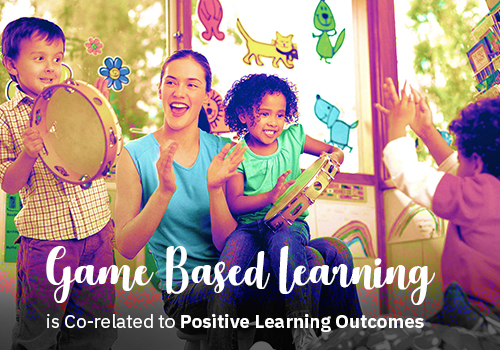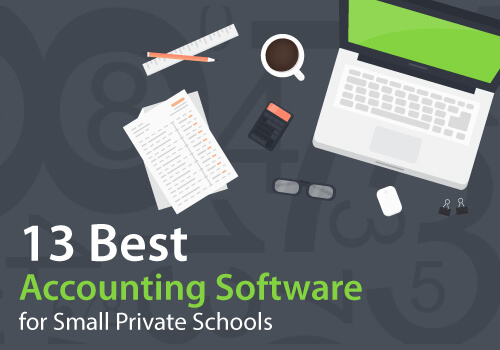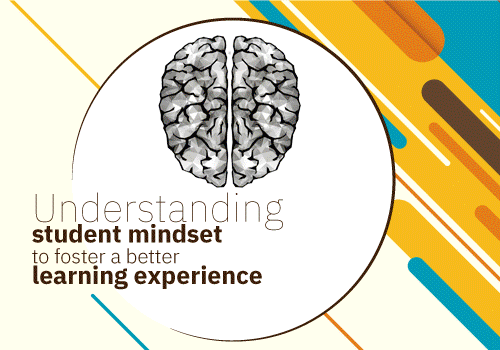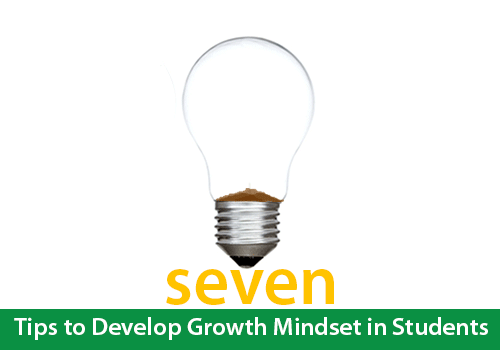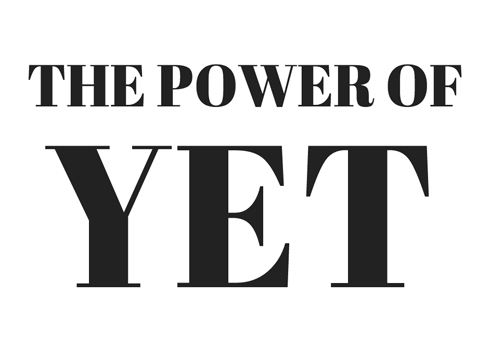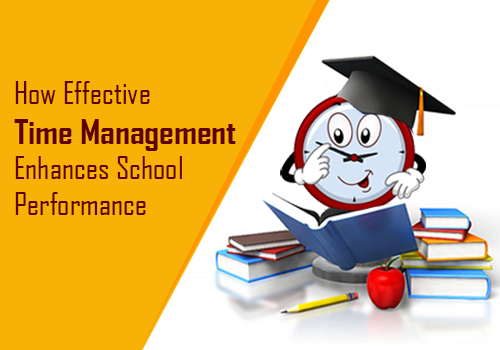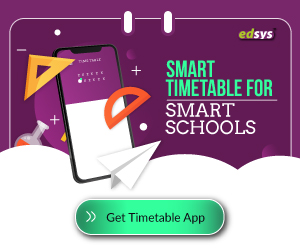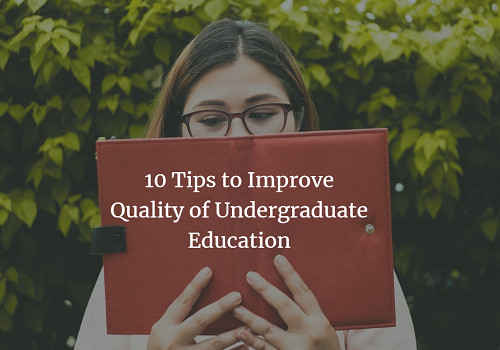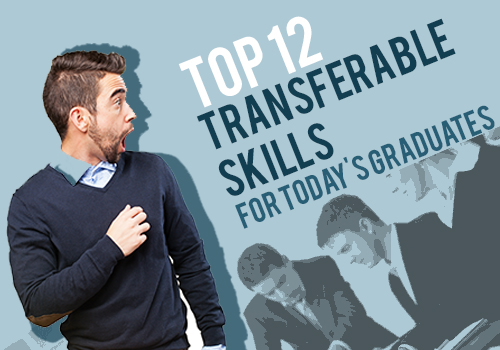Visual: Using sightIn this learning style, images, colours, pictures and maps are used effectively to manage information and execute communication. A student uses his mind’s eye to visualize ideas, objects and outcomes. Visual art, photography and architecture are the key areas of focus when using this learning approach. A student adopts one or more of the approaches when learning through visuals.
- Mind maps: Student replaces bulk of texts with keywords and pictures and uses colours to easily connect between the differences.
- Systems diagrams: The links between the system parts are visualized in a structured way by replacing words with pictures.
- Visual story: Students can memorize lengthy step wise procedures through a well connected visual story.
- Auditory: Using songs or rhythms
This is one of the most proven learning styles that are used right from the elementary classes. Rhymes and music will be the key elements used in the learning process. These students would find it easy to understand and recall information that is reinforced in the form of sound. They might have difficulty in understanding a drawing or writing but easily picks up information through listening. They won’t be comfortable with answering timed tests or reading passages. Let us have a look at the way auditory learners prefer to study:
- Rhythm: They can easily understand information presented with a rhythm. They would prefer lessons in the form of rhymes or songs that easily connects
- Speeches, lectures and oral sessions are more favourable for them and they can easily write responses to lectures
- They prefer talking to themselves when completing a task and like music as background while learning.
- Verbal: Speaking out loud the information
This kind of learners finds it easy to express in both written and verbal form. Reading out content loud is a good approach for verbal learners and they always try to make it dramatic that helps them at time of recall.
Here are a few ways that are favourable for verbal learners:
- Word based techniques are the best ways through which they pick up learning. Assertions and scripting are among the top approaches.
- These people can learn lists of information with mnemonics.
- Recording scripts using digital form and reviewing later sounds very effective for these learners.
- Verbal exchanges in the form of negotiations, radio calls or sales can be a good strategy to learn things quickly.
- Kinesthetic: Using touch and taste to explore the information
This is one of the scientifically proven learning styles that work well for a majority of student groups. They prefer physical activities rather than sitting idle and listening to lectures or watching demos. This can be combined with visual and auditory methods to benefit from multisensory learning. These are the favourable approaches of kinesthetic learners:
- They love to learn new things through action, touch, movement and hands-on activities.
- These learners use more objects such as flashcards while learning and utilize the magic of touch and feel to memorize what they have learnt.
- Skills can be practiced through activities, either as single or in groups
- Writing and drawing out subjects using big sheets and colour pens can play the trick for them.
- Logical: A more mathematical approach to concepts
This category of learners would like to use their brain as part of learning, mostly through mathematical reasoning. Recognizing patterns of information is their skill and they can easily group or classify information by establishing connection between them. They can sometimes do calculations in mind without the need of any paper or pen.
This is how they bring in mathematical approach while learning concepts:
- They create and make use of lists by extorting key points from the content
- They analyze parts of the training or learning and establish connections
- They work out problems by exploring the logical reasoning behind the conclusion
- Interpersonal: Learning in groups
These types of learners prefer learning in groups as they can easily communicate well with others both verbally and non-verbally. They love to interact with others and learn things by discussing, listening and sharing ideas. They will develop the skill to handle variations and reciprocate well while working towards a common target. Here are a few approaches loved by interpersonal learners:
- Study groups with students of similar interests can invoke their thirst for learning and improve their collaboration skills
- Role play activities can improve their leadership qualities.
- Activities such as debates help them to express their views while respecting others’ views
- Intrapersonal: Learning alone
This category of students would love to spend time for introspective, more private, and independent learning. They prefer to focus on their feelings, instincts and thoughts while approaching a subject. They give importance to self analysis and track their own challenges and accomplishments from past experiences. They are confident about their aptitude and skills and work out problems on their own. Students who prefer a solitary style of learning usually do the following things during their learning time:
- Personal thoughts are recorded through journal or diary
- Events are saved for future reference through personal logs
- They work alone and quietly and learns from self reflection
Optimize Learning process
It is the role of teachers to utilize the resources optimally to improve student learning.
Treat each student as separate individuals with a different level of understanding and let them get the most out of the classroom sessions.
However, the idea of individualized learning may not work every time in a classroom with more than 40 to 50 students.
In addition to teaching them different subjects, the ultimate goal of teachers is to prepare students for success.
With the easy availability of information and advanced resources, learning is now a more flexible process.
Their ability should be developed to a point where they can see things from different perspectives and move forward with a personalized approach to the things they do.
Here are a few strategies that teachers can adopt to optimize the learning process and help students have a productive classroom experience.
Develop a growth Mindset:
Students who have a fixed mindset are more likely to fall back in the process of learning at some point of time.
So it is highly important for teachers to develop a growth mindset in them and let them explore the world of learning.
Here are a few tips that might help teachers to foster a growth mindset among students:
- Inspire them to see challenges as opportunities
- Train them to embrace imperfections
- Make them understand that failures are stepping stones to success
- Teach them that learning process is always important and not just the end result
- Always have a sense of purpose when set out for learning
- Help them to accept constructive criticism as a powerful tool for progress
The Power of practice and regular study:
The systematic practice of what is learnt is important to keep that in memory and apply it in real life.
As the proverb suggests, practice makes a man perfect.
So help students to understand the importance of practice and regular study.
Some students have the habit of studying everything together just before exams and it results in their poor performance.
So it is always ideal to study the daily lessons and revise the lessons in a regular interval of time so that it stays in their memory.
Teachers can also help in the process by conducting weekly tests or assessments and make them study the lessons on a regular basis.
Give them a chance to get hands on experience in the subjects which provides them a better understanding.
Creative Learning:
Students who develop creative thinking and learning are more likely to learn better and excel in their studies.
So teachers can take initiative to help them have a creative space in classroom and help them to enjoy the learning.
Here are some other ways teacher can adopt to trigger creative learning:
- Integrate more hands-on learning
- Classroom layout can be made flexible
- Use design thinking
- Encourage discussion learning
- Create collaborative learning spaces
- Give them multiple type of assignments that invoke their thinking
- Promote team building exercises
Deep learning:
A combination of technology and conventional learning can be a good option to promote deep learning.
This helps students to gain transferable knowledge which is the most important end result of true learning.
This can be achieved by uncovering knowledge through creative teaching methods and not always sticking to teaching scripted curriculum.
Teacher should consider shifting their role to a motivator or guide where students follow some independent learning.
Here are some key strategies to promote deep learning in classroom
- Lessons can be designed with flexible learning paths
- Informally assess students
- Encourage collaboration
- Promote real world learning
- Pair struggling learners with experts
Brainstorming:
Brain storming promotes thinking skills in students which helps them to grasp the lessons in a much better way.
In fact, advanced brainstorming sessions aids them to stretch their thinking skills to a great extent that enables them to eliminate the fear of risk taking.
Teachers can come up with brainstorming questions for single individuals or as a team activity.
Students can be given the freedom to come up with ideas without the fear of mistakes.
Motivation:
A classroom set up that motivates the student every single time they enter the place can really make a difference.
Give a clear definition of what is expected out of them in classroom and exams to avoid last minute confusion and that result in lowered self esteem.
Teachers and students can together pin up motivational posters in the walls of the classroom and inspire each other to perform better.
It is important to create a classroom space where students can freely express their ideas and concerns.
Here are a few other ways to improve student motivation:
- Promote positive competition in class
- Give rewards for a success
- Give them a partial control of classroom activities
- Bring in variety of teaching methods
Goal Setting:
Visualizing goals with timelines is an amazing way to empower students to learn better.
A clear vision and a motivating atmosphere can help them to develop a creative way of achieving goals.
Inspire them to set up goals to better their own performances and not to compare with other students.
Contemporary Educational practices
The goal of contemporary educational practices is to promote positive attitudes or academic behaviours in students and invoke their curiosity to become knowledge seekers.
Following the same kind of teaching styles or educational practices every time creates boredom among students and they will start losing their interest in learning.
The right mix of teaching methods help students to have a better and productive learning experience.
The ultimate goal of a good strategy is to bring in some positive attitudes or academic behaviours in students through different policies and individual activities.
Both teachers and students will have the impact of the practice followed in their school and that includes both pros and cons.
Here are the main contemporary educational practices followed in schools today.
- Blended Learning:
This type of learning often combines the face to face classroom learning and online learning.
The right mix of traditional classroom teaching and web learning can help students to grab the concepts quickly and have a productive learning time.
They can have the best of both learning methods and experience real-world classroom learning.
In this method, the role of teacher is redefined as just supporters or a guide while student explores the different teaching options.
This hybrid teaching is a prime method in most of the institutions while it is used only occasionally by some others.
This teaching mostly covers in-person classroom activities with the guidance of a teacher, pre-recorded lectures, as well as a right portion of independent study time.
Here is why blended learning is one of the most effective teaching methods:
- Information can be accessed and shared in a range of different ways
- Teachers can easily acknowledge strength and weakness of different student sets
- Despite the one-size fit all teaching methods, students can flexibly learn anytime and anywhere.
- Teaching can be more engaging and students can explore the digital technology.
- Teachers can focus on student understanding rather than the delivery of teaching methods
- Cognitive learning:
This educational practice hints the type of learning by developing cognitive skills and in simple it can be referred to as learning by thinking.
It mainly covers the way by which students think, remember, and perceive information and how they perform problem solving.
In addition to basic text book learning, it focuses on the values, attitudes, as well as social interaction.
Along with covering the syllabus, teachers help students the way they categorize and retain information.
This mainly focuses on understanding the way brain works which helps educators to teach more wisely and students to learn better.
Sometimes it can also be referred to as incidental learning and most of the times it happens through experience, thoughts and insights.
This advanced learning strategy promotes use of mind to complete a task or solve a problem. Let us have a look at how cognitive learning helps:
- Understanding the reasons behind a concept helps them to retain it for long
- They can easily build up on past knowledge with improved memory
- They can easily develop connections between what they have learnt
- It promotes long term learning and triggers interest of learning more
- Embodied Learning:
This type of learning mostly involves use of body and teachers and students interact with each other inside and outside classroom.
Both communication as well as representation of information uses body as a tool.
Embodied learning comprises student collaboration and movement whenever possible throughout the process of learning which in turn leads to cognitive development.
It is often referred to as robust learning or optimal learning and the advanced form of this learning makes use of motion capture technology.
The whole body is involved in the process rather than just applying the intellectual means of learning.
Students learn different concepts of learning while they experience it which helps them to have a comprehensive understanding.
Seeing the motor functions and chemical reactions makes much difference rather than just going through lectures.
Here is how embodied learning helps students with different activities:
- Integration of learning sciences and human computer interaction gives a better learning output
- Activities such as Lego building stimulates their vision and patience and triggers creativity
- Kinect-based educational games combines intelligent thinking with physical gestures
- Hands on projects stimulates their creative side and they enjoy learning
- Field trips let them to experience the subject which helps to understand and memorize it for long
- Flipped classroom:
In this educational practice, students will go through the lessons at home through online courses or materials and utilize the class time in doing assignments based on it.
The idea is to flip the common instructional approach to avoid the boredom of following the same teaching method every time.
A change in the approach would invoke student interest and they can clarify their doubts on the video lectures during the class hours.
As they get an overall idea about the lesson before hand, it becomes easy for them to understand and follow what the teachers are talking about.
The ultimate goal of this teaching strategy is to enable them to become self-directed learners and invoke curiosity among them to seek knowledge every time.
Here let us have a look at the important benefits of flipped classroom:
- Students will find it easy to handle the homework lessons
- Instead of spending much time on theory, teachers can focus on the practical application during class hours
- Teachers will get more time for handling students that need some extra attention
- Parents will have a better transparency about what their kids are preparing for the next day at school
The use of technological tools in classrooms has made learning and teaching more flexible and convenient and students can have a customized learning experience.
Educational tech
Unlike in the past times, technological tools are now part of today’s learning.
The digital media as well as machines are being used productively to give a better learning experience.
The idea of virtual reality makes learning more exciting whereas wearable technologies are making the accessibility to information handy.
With the wide spread use of mobiles and tablets among students, the educational apps are now becoming popular than ever before.
Here let us have a look at the main educational technologies being used in today’s schools.
- Virtual Reality:
The advancement in digital technology is making human interaction possible with subjects around them through virtual reality.
As per the reports, virtual reality applications are showing a remarkable progress and one can expect about two times the rate in 5 years.
Here are some significant reasons to use virtual reality in classrooms:
- They get the opportunity to travel and explore different places round the globe with the comfort of their classroom
- They will get a real hand experience of different career paths during school days which help them to choose a better career
- Exploring the depth of ocean, inside of human body or vastness of space is within their finger tips
- Learning using virtual reality possibilities promotes wonder and curiosity among students which triggers a craving to learn more.
- Wearable technology:
The use of wearable technologies is taking the classroom experiences to a new exciting level than ever before.
The VR possibilities using wearable technology has made the learning of a new subject more engaging and interactive.
Smart watches are now replacing the role of mobiles and laptops to a great extent to access information.
With the speech-to-text software of smart watches, note taking is no more a hardship for students. In the case of physical education, sharing the goals and activities keep them motivated throughout.
One of the advanced forms of wearable technology in classroom is ‘muse’. This brain sensing headband comprises 7 sensors that have the capability of tracking brain signals.
Teachers can use this device to learn if the student actually understood the lessons and promotes student engagement.
Here are some other important areas in which wearable technology is being used in classrooms:
- Google Glass is used to bookmark important passages and taking notes
- The high definition camera, GoPro helps to research and explore subjects by capturing points at will
- The GPS facility in these devices help teachers to monitor student activity during field trips
- Customized learning experience:
It would be good to assess the students throughout the learning process instead of testing with a final exam when there is no chance to change the teaching method.
With continuous assessment and feedback, teachers can come up with the best content delivery method that can suit the strong and weak students.
Also keep on changing the teaching styles often to avoid the boredom and gain student interest and engagement.
A blended learning model is always the right decision and the best approach to give personalized learning experiences.
Give importance to expression of learning, differentiation of instruction and the optimal use of technology to set a platform for student centred learning.
Here are some key ways to promote customized learning experience:
- Always experiment with new types of classroom set ups
- Give space for online learning opportunities
- Insist on developing personalized study plans and independent study time
- Educational apps:
With the widespread usage and acceptance of smart phones and tablets in classrooms, education apps are taking a more important role among students and teachers.
While some apps are specifically designed for students to improve their memory, vocabulary skills, creativity and ease of understanding, there are apps for teachers that make their job easy.
Some educational apps are platform centric while others can work flawlessly despite the platforms used in gadgets.
Let us have a look at some popular educational apps that are highly recommended for today’s classroom.
- Hopscotch app helps students to learn computer science fundamentals with ease by developing game designs
- Explain Everything app is an interactive whiteboard where teachers and students can share ideas in real time.
- Mindmeister app lets students to map out the relationships or links between concepts or ideas
- Schoology works as a cloud based platform where students can post videos, assignments, links or completed work.
- Socrative app is best for receiving and giving student feedback. This learning assessment tool can simplify reports and grading.
- Plickers app is used by teachers to check for student understanding during classroom hours.
- Kahoot app lets teachers to make interactive and fun quizzes for students to make learning more engaging.
A good educator’s role is to manage the classroom well giving equal importance to every student and keep on changing the policies until they see ultimate success.
The Educator’s Role
The educator’s role in the learning phenomenon is really significant and it matters a lot to bring the best out of the students’ potentials.
In addition to covering up the school curriculum, teachers should be able to impressively connect it to day to day life scenarios.
This helps students to easily grasp the lessons and learn how to apply what they have studied into the real life.
Unlike the traditional classrooms, the role of teachers has changed a lot from one sided dictators to support givers which promotes students as independent learners.
In a blended classroom with personalized learning tactics, here are the few important roles of educators:
- Classroom Planners: This includes long-term planning of instructional strategies and curriculum by analysing the student benchmarks well in advance which frees up their time for data analysis during class hours.
- Data Analytics: Students’ performance analysis data should be collected and organized for future use to assure real time success and long-term betterment.
- Classroom Managers: In a classroom with different set of students, all learners should be engaged with differentiated tactics and they have to set appropriate learning-checkpoints and learning norms.
The most important part of a learning cycle is to give feedbacks to students on their progress whether it is positive or negative.
Give them the confidence to accept feedback as constructive criticism and use it to bring in positive changes in their approach to learning.
The mode of assessment is equally important and it should be a continuous process rather than a final assessment at the end of the semester or year.
It should be regular with daily, weekly or monthly analysis and feedbacks and at the same time student should get an idea about where they actually stand at the end of every year with an overall assessment.
Conclusion
Learning is a beautiful process if students enjoy what they do.
So teachers should play the important role of making this phase comfortable for them and bring out the best in them.
Now we can easily say that teaching and learning is not a one sided affair but it is a blend of giving and receiving knowledge.
Simply giving out lectures doesn’t do the trick anymore and it is high time to think from the perspective of students.
They would enjoy the learning part if a truly adaptive and a personalized approach is offered.
The role of a student is not just to receive information but to share what they have learnt with their peers and grow up with good human values.
So it is fair to say that understanding the student mindset is the best trick available to foster better learning experience.

